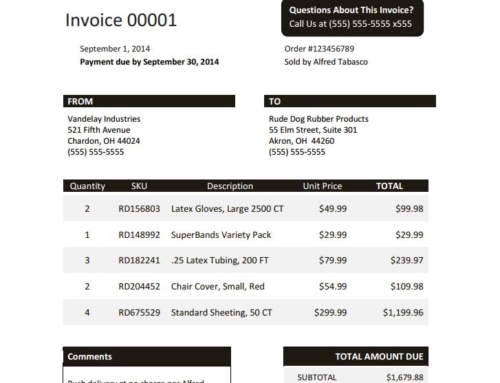Managing cash inflow and outflow is one of the most important aspects of a finance executive’s job but it’s far from easy, especially when it comes to accounts receivable management. You can set terms and send invoices, but managing the process and policy behind getting paid on time is an entirely different story. Cash flow is delicate and it’s a vicious circle- you know when you need to cover an expense, but if you’re not getting paid on time, you may not have the cash you need to take care of it.
So what can you do to improve collection performance and gain more control over cash flow? Below are a few of the most effective ways to get a handle on accounts receivable management and some additional resources to help you find the right balance of cash in and cash out.
IDENTIFY POTENTIAL PROBLEMS EARLY AND AVOID THEM
When it comes to accounts receivable, you must be selective in which customers you extend credit to, how much you extend and how long you give them to pay. When you tighten up those areas and put a process in place for your sales and A/R employees to follow, you’ll see a reduction in late payments, disputes, and bad-debt since you won’t be granting credit to customers likely to cause those problems. Once again, easier said than done-but it’s not impossible. Here are two ways you can get ahead of the curve and avoid problems before they happen.
- Require all new customers who may potentially be buying on credit to fill out a credit application. You will also want to ask repeat customers who ask for an increase in their credit limit or an adjustment to their terms to fill out another form to help you make that decision.
- Document the rules, regulations, and procedures for checking customer credit worthiness, determining limits, setting terms, and other credit risk management and collections policies where all employees have access to it. A credit plan is a great way to make sure your accounting and sales staff alike know your expectations and the steps they must take to meet them. What makes a credit policy an effective one? There are many factors to consider, download this guide that outlines 6 easy to follow steps to making sure your credit plan works and helps you reach your goals.
BASE CASH FORECASTS OFF OF ACTUAL CUSTOMER BEHAVIOR
For most financial executives, forecasting accounts receivable is among their most difficult tasks because it’s hard to predict when your customers will pay you. You may know when their payment is due, but not all customers pay on time. While it’s hard to know what a new customer will do, your repeat customers do have a payment pattern. Are they usually early? On time? A day late? A week late? longer? Do they pay small invoices on time and large invoices late? The trick is identifying it and using it to more accurately predict cash flow.
So, what are the accounts receivable management best practices for making these predictions? Although it is possible in an ERP system or on spreadsheets, it is not always the most accurate and reliable way to do cash forecasting. Consider an accounts receivable management solution with statistical cash forecasting based on the historical payment behaviors of your customers.
USE BUSINESS INTELLIGENCE TOOLS TO MAKE CONFIDENT DECISIONS
Monitoring, measuring, and improving receivables performance is a proven way for companies to increase cash flow, but many don’t make this a priority. Why? Because gathering and analyzing this information is extremely time consuming for companies using ERP and spreadsheets to manage A/R data. A dashboard for receivables management can help you quickly translate your goals and objectives into measurable metrics. With real-time insight into percent of overdue receivables, top customers, accounts receivable turnover and other metrics at your fingertips 24/7 you can make the decisions you need to make with confidence.
USE PAYMENT PATTERNS TO IDENTIFY CUSTOMERS IN FINANCIAL DISTRESS
Not only will business intelligence allow you to track the performance of your collectors and help you recognize your strengths and weaknesses, it will help you identify customers who may be falling into financial distress. This relates back to #1 above-recognizing problems before they happen. By monitoring customer payment patterns you can make adjustments to customer credit limits and payment terms before their cash flow problems become yours. For example, if a customer who has always been on time begins to pay later and later, that could be a sign of a growing financial problem and you may want to reduce their credit limit or adjust their terms. The next step is to make sure you handle this situation correctly so you can keep your relationship with this customer while also protecting your finances.




